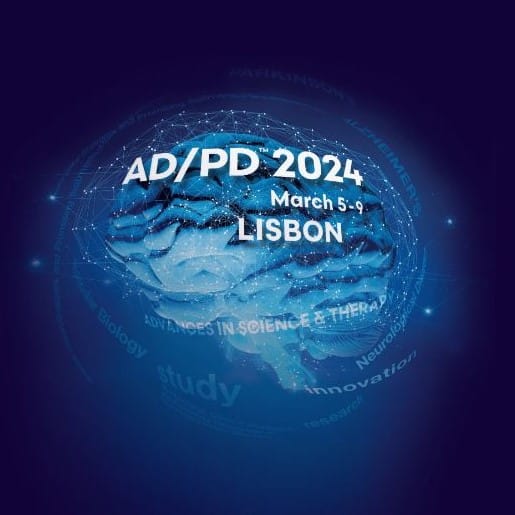Poster session Information:
Poster Session: Poster 1
Title: Evaluating Participant Burden: Electronic Patient-Reported Outcome Assessment Completion Time in Clinical Trials for Parkinson’s Disease
Dates: Shift 1: Wednesday, March 6, 2024 – Thursday, March 7, 2024
Time: 10:40-17:00
Board#: 0587
Abstract:
Objective: Patient-reported outcomes (PROs) that measure quality of life and symptom impacts are becoming more important in clinical trials of treatments for Parkinson’s Disease (PD). Given the existing symptom and disease burden in Parkinson’s, participant burden needs to be thoughtfully considered when incorporating PROs into trials. The objective of this analysis was to explore whether PROs present a higher burden to participants with PD as compared to participants without PD by leveraging metadata from an electronic PRO (ePRO) to examine time to completion.
The Beck Depression Inventory – Second Edition (BDI-II) was selected; it is a 21-question PRO measure of depression severity, and is commonly used in trials across many different disease areas.
Methods: Operational ePRO metadata from 1 PD trial and 11 non-PD trials were analyzed to determine time to complete the BDI-II. A total of 4806 records were analyzed; 101 records from the PD trial and 4705 records from non-PD trials. Each record represented one completion of the BDI-II on Clario’s ePRO device.
Results: The analysis revealed a significant difference whereby participants in PD trials took significantly longer to complete the BDI-II than non-PD trial participants (t=-7.40, p<.001). Mean completion time for the BDI-II was 318s (5.3min) among participants in PD trials and 159s (2.65min) among non-PD trial participants.
Conclusions: This analysis suggests that clinical trial participants with PD take more time to complete the electronic version of the BDI-II than those without PD. This should be considered during protocol design, as the threshold for participant burden in PD trial participants may be lower than for other trial participants. We recommend that this analysis be replicated with other PROs to determine the extent to which these results are generalizable.
Posters will be displayed during the AD/PD conference in the poster hall.
Poster 1 Authors:
Presenting author:
- Laura Khurana, MPH – Principal Scientific Advisory at Clario
Co-authors:
- Jessica Emerson, Ph.D. – Scientific Advisor at Clario
This ePoster will be displayed on ePoster screens within the congress centre, as well as on the congress platform and the app during the congress. It will not be presented at a specific session. In addition, all ePosters will be remain available on the congress platform and congress app until 3 months after the congress.
Poster Session: Poster 2
Title: Optimal Digital Endpoint Selections of Movement in Parkinson’s Disease
Dates: Poster Shift 2: Friday, March 8, 2024 – Saturday, March 9, 2024
Times: 10:40-17:00
Board#: 0590
Abstract:
Objective: Wearable sensors enable precise, sensitive, and reliable digital endpoint capture of movement impairment in Parkinson’s disease (PD). As there are thousands of digital movement endpoints available for use in clinical trials, selecting those most optimal per each unique study can be challenging. We offer guidelines, aligned with regulatory guidance, and supported by the latest scientific evidence.
Methods: An approach to selecting the best digital movement outcome for a clinical trial is outlined considering the following criteria: 1) meaningfulness to participants 2) sensitivity/specificity to disease 3) related to the conventional stage of disease/progression and patient-reported scales 4) reflective of pathophysiology and 5) sensitivity to change. A review of the literature on gait and balance digital outcomes for newly diagnosed PD was performed.
Results: Digital endpoints of gait captured with inertial sensors on the feet, lower back, and wrists have the most scientific supported. The majority of evidence is available from short walking and standing tasks performed in a controlled setting, while evidence for passive, real-world data is growing. Specifically, measures including foot strike angle, turn velocity, arm swing reduction/asymmetry, gait variability, and sway jerkiness reflect the outlined criteria for early PD. Measures of bradykinesia and tremor, while having more limited evidence, are also promising. However, the hypothesized effect of the therapy under investigation must also be considered, as the sensitivity of specific gait and balance endpoints to change differ by treatment due to the underlying pathophysiology.
Conclusions: Digital endpoints of movement impairment specific to early PD are meaningful to patients, more sensitive to disease progression than conventional clinical scales, and a critical tool in the future success of clinical trials to provide effective treatments for PD patients.
Poster 2 Authors:
Presenting author:
- Kristen Sowalsky, Ph.D., D.C. – VP, Medical and Scientific Affairs at Clario
Co-authors:
- Vrutangkumar Shah – Director, Data Science and Biostatistics, Precision Motion at Clario
- Fay Horak – Chief Scientist at Clario
Meet with us at AD/PD 2024.
Complete this form and we will reach out soon to schedule a time to connect at the event.
If you are a company wishing to collaborate with us, please stop by our booth during the conference to talk with our team.
